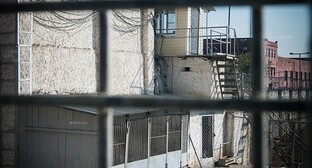07 September 2003, 19:56
Don Cossack Host
Part of the Cossacks in pre-revolutionary Russia, the most numerous one, quartered in the Don Host region/oblast (the present-day Rostov region, part of the Volgograd and Voronezh regions and the Republic of Kalmykia). First Cossack settlements independent on the central government arise between the Sea of Azov and the Medveditsa River in the XV cent. The Main Don Host takes shape as an organized community in the second half of the XVI cent., down the Don River (from its mouth up to the Tsimliansky town). Cossack settlements stretched for 800 km along the Don and its tributaries (the Seversky Donets, Medveditsa, Khoper (Khopyor), Buzuluk, and Zherebets rivers) by the late XVI cent. "Old believers" (a group that broke with the Orthodox Church in the 17th cent. - trans.) found shelter here in the XVII cent., settling down along the upper Don. There was up to 125 Cossack towns by the late XVII cent. The centers of the Don Cossack Host were: Razdory (XVI cent.), Monastyrsky Gorodok (from 1622), Azov (1637-42), Makhin Ostrov (from 1642), and Cherkassk (from 1645) that consisted of 11 stanitsas (Cossack villages), including one inhabited by Tatars. The Don Cossack Host recognized the supreme power of the Russian czar in the late XVI cent. However, it enjoyed a high degree of autonomy and had self-government until the early XVIII cent.: the host Krug ("meeting," supreme government and judicial authority) and elected executives - an ataman, two esauls (captains), and a clerk. A campaign ataman with unlimited authority was elected for campaigns. The host consisted of squadrons of 100 and 50 Cossacks ("sotnias" and "half-sotnias") headed respectively by sotniks (1st lieutenants), pyatidesyatniks (2nd lieutenants), and khorunzhies (ensigns). The population lived by hunting and fishing until the XVIII cent. The Don Cossack Host organized raids on Turkish possessions along the Azov and Black and Caspian Sea coasts in order to loot them. Social stratification led to the appearance of two groups: the "well-off" (or "old-timers"), primarily along the lower Don; and the "ragged" (the "indigent"), formed chiefly of runaway serfs that gathered along the upper Don and had no farms, so readily joined raids and rebellions. The indigent were one of the principal driving forces of the 1670-71 Peasant War under the leadership of Stepan Razin. The Russian government used the Don Cossack Host to protect the southern borders from the late XVI and as an armed force in wars with Turkey and Poland from the XVII cent. Allowance for the "service" was paid in cash, gunpowder, lead, cloth, and bread. An Ambassadorial office was in charge of affairs of the Don Cossack Host from 1623, with which the latter communicated by sending "light" and longer-term "winter stanitsas," i.e. embassies. In 1637, the Don Cossacks seized Azov from the Turks and kept it until 1642, having stood a 3.5-month siege. The Don Cossack Host took part in the 1695-96 Azov campaigns. Governmental colonization, prohibiting the Don Cossacks from giving shelter to runaways, and punitive actions of the czar's troops caused the 1707-09 Kondraty Bulavin Rebellion. The rebellion quelled, the Don Cossack Host became subordinate to a Military board (from 1721). Election to the office of ataman was abolished virtually in 1718 and formally in 1738; election of host sergeants (a Cossack executive body; later the upper class in the Cossack society - trans.) in 1754. During the 1707-09 rebellion, up to 2,000 families headed by ataman Ignat Nekrasov fled to the Kuban area, then to Dobruja (Rom. Dobrogea, Bulg. Dobrudza); part of their descendants returned to Russia in the early XIX and XX cent.
Obligatory military service was introduced for the Cossacks in 1763; farming and horse breeding became the key occupation of the population in the XVIII cent. During the 1773-75 Peasant War under the leadership of Emelyan Pugachev, the Don area was occupied by the czar's troops and completely lost its independence (1775). The forcible resettlement of the Don Cossacks to the Caucasus that was launched back in the early and intensified by the late XVIII cent. caused the rebellion of five stanitsas headed by esaul Rubtsov (1793). The economic and political power of host sergeants that were granted the rights of the Russian nobility in 1798-1800 was growing during the XVIII cent. the sergeants seized host lands, gave shelter to runaways from Sloboda Ukraine (a historic province in XVII-XVII cent. Russia; the present-day Kharkiv/Kharkov region, Ukraine, and parts of the Ukrainian regions of Donetsk, Luhansk/Luganks and Sumy and Russian regions of Voronezh, Belgorod, and Kursk - trans.), and secured their serfdom in 1796. The territory of the Don Cossack Host was divided into seven districts in 1802 (nine from 1887). A provision on military service was introduced for the Don Cossack Host that established a 30-year term of service with one's own arms and two horses. The administration of Don landowners and the service load led to the impoverishment of ordinary Cossacks and peasants, which served as a basis for the 1818-21 peasant unrests and intense discontent of the Cossacks. A commission on the development of the Don Cossack Host was set up in 1818; it worked out the 1835 provision that established a land share of 30 dessiatines (32.7 hectares) per one Cossack. Yet the seizure of the steppe on the left bank of the Don by private horse breeders; the existence of landed gentry; and increase in population reduced this share to 11 dessiatines (11.99 hectares; 1916), which included 9.8 dessiatines (10.682 hectares) of "convenient" land. In the late XIX through early XX cent., however, about 50 percent of families were actually stripped of the plots they or stanitsas leased, for service outfit arrears. Only 20 percent of farms were well-to-do. The government of the Don Cossack Host was divided into a military and a civil section in 1835, combined in the person of appointed ataman. The centers were: Cherkassk (until 1806) and Novocherkassk (until 1920). The military service term was cut down to 20 years in 1875, including three (later one) years of training, four years in the army, and eight years on a privileged basis on operational alert; in the reserve from 33 years and in irregular units from 38 years. In peacetime in the early XX cent., the Don Cossack Host recruited 17 army and 2 guard regiments, 8 batteries, 6 separate squadrons of 100 men, and 12 crews (a total of 24,000 men). During 1914-18 World War I, the Don Cossack Host put forward 60 mounted regiments, 136 separate squadrons of 100 and 50 men, 6 foot battalions, 33 batteries, and 5 reserve regiments (a total of more than 100,000 men). The population of the Don area by 1917 amounted to 3.53 million. The Cossacks accounted for 42.3 percent and the "native" peasants for 25.5 percent; the rest were "foreign" (peasants and other non-Cossacks that resettled to Cossack lands after the abolishment of serfdom; they bought or rented land from Cossacks and worked as farm hands - trans.). The Don Cossack Host region numbered 134 stanitsas (including 13 Kalmyk ones inhabited by 30,600 people) and 163 peasant districts/volosts with an average allotment of 4.4 dessiatines (4.796 hectares) per peasant. The Cossacks owned 64.5 percent of land, Kalmyks 3.8 percent, landed gentry 15 percent, and peasants 3.9 percent; 12.8 percent made the host reserve. Mining industry was developed and employed up to 140,000 workers.
The Don Cossack Host took part in all of Russia's wars in the XVIII-XX cent. In the XIX and particularly the XX cent., the czarism extensively used the Don Cossacks to quell the revolutionary movement, which caused protests and even unrests among them. Class gaps deepened among them during World War I, facilitating antiwar and revolutionary moods.
After the 1917 February revolution, counter-revolutionary officers formed a Don Host government headed by ataman A.M. Kaledin. It opposed the Soviets that sprang up in Novocherkassk, Rostov, Taganrog, and a number of stanitsas. After the October revolution, Kaledin tried to turn the Don area into a basis for counter-revolution and took Rostov and Taganrog, backed by the Voluntary Army of the White Guard. Most Cossacks, however, did not support the counter-revolutionary forces that time. On January 10 (23), 1918, a congress of frontline Cossack units in the Kamenskaya stanitsa elected the Don Cossack Military Revolutionary Committee which soon declared a Soviet government. Revolutionary Cossacks and Red Army units routed the White Guard and took Rostov and Novocherkassk. A Don Soviet Republic was formed. Yet intensifying class struggle and "de-Cossacking" policy conducted by Soviet authorities allowed the anti-Soviet Cossacks to win a Cossack majority over to the side of counter-revolution with the Don area as one of its key centers. In March-April 1918, anti-Soviet rebellions burst out in a series of stanitsas. Under the pressure of German intervention and the White Guard, the Soviet troops were ousted from the Don area by mid-August. The "Don Salvation Krug" formed the government of the "All-great Don Host," headed by ataman P.N. Krasnov who was assisted by Germany. Having formed a significant army (47,000 in August and 65,000 in September), Krasnov carried out two attacks on the city of Tsaritsin in July-October, but suffered a defeat. A successful advance of the Soviet troops on the Don area in early 1919 initiated the break-up of the White Cossack army. On January 10, 1919, the Don army became subordinate to General A.I. Denikin who appointed General V.I. Sidorin to command it. The White Guard was able in summer 1919 to drive the Soviet troops from the Don area, with the Upper-Don (or Veshenskoye; so named after the Veshenskaya stanitsa- trans.) Cossack rebellion bursting out in the Soviet rear in March 1919. The Don army secured the right flank of the Voluntary Army during Denikin's advance on Moscow.
Bitter class struggle developed in the Don area in 1919. The "Red" Cossacks served as one of the key bases to form the 1st and 2nd Soviet Cavalry armies. The Voluntary Army was routed in October 1919. The Soviet troops took Rostov and Novocherkassk in January 1920 and captured the entire Don area by March. In 1920, the Don Cossack Host ceased to exist. Don Cossack divisions were formed in the Red Army and took an active part in the 1941-45 Great Patriotic War; the 5th Don Cossack guard corps was particularly distinguished.
The Don Cossack Host was restored in the late 1980s. Cossacks of the Don Host took part in the Transnistria and Abkhazia events and wars in former Yugoslavia. For a series of reasons, the Don Cossack Host split into two hosts in the 1990s - the "register" and "non-register" Cossack hosts.




